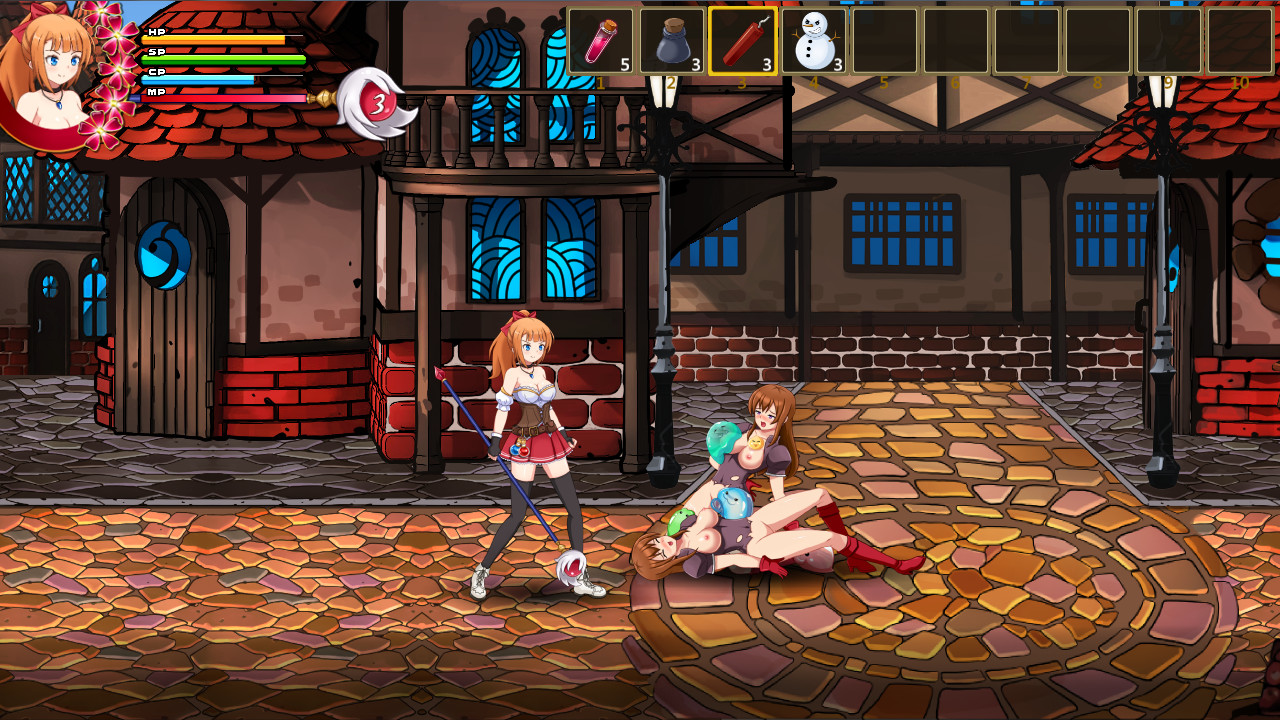Best Futa Game Experiences 2024: Play Now!
Is the digital landscape evolving into a new frontier of exploration and expression, or is it simply a reflection of our deepest, most primal desires? The intersection of gaming and the "futa game" genre presents a compelling case study, forcing us to examine the boundaries of artistic freedom, sexual expression, and the very nature of virtual interaction.
The discussion surrounding "futa games" is a complex one. At its core, the term describes video games featuring characters with both male and female sexual characteristics. These games often delve into themes of gender, sexuality, and body modification, challenging traditional norms and offering players a space to explore alternative identities. However, the portrayal of such themes can be highly controversial, sparking debates about objectification, consent, and the potential impact on players. Furthermore, the market is awash with varying levels of artistic merit, from complex narrative driven experiences to more simplistic, often exploitative, offerings. The critical analysis of futa games requires a nuanced understanding of both the artistic intent and the cultural context in which they are created and consumed.
| Category | Details |
|---|---|
| Genre Focus | Interactive narratives featuring characters with both male and female sexual characteristics. |
| Common Themes | Gender identity, sexuality, body modification, power dynamics, consent (or lack thereof), and often explore themes of transformation and the blurring of traditional gender roles. |
| Gameplay Variety | Range from visual novels with branching storylines to RPGs, strategy games, and even action-oriented titles. |
| Artistic Styles | Vary widely, from anime-inspired visuals to more realistic or stylized depictions. |
| Target Audience | Primarily adult audiences with an interest in exploring alternative sexualities, gender expression, and fantasy. |
| Controversies | Concerns about objectification, exploitation, and the portrayal of sensitive themes such as sexual violence and power imbalances. |
| Market Landscape | A diverse market with both independent developers and established companies creating "futa games." |
| Notable Examples | While specific game titles can fluctuate in popularity and availability, the genre encompasses a vast array of titles, often discussed within niche online communities. These communities are often involved in rating the content in order to establish more transparency. |
| Ethical Considerations | The importance of depicting consent, respect, and avoiding the normalization of non-consensual acts within the games. |
| Future Trends | Potential for enhanced graphics, improved storytelling, and a deeper exploration of complex themes as technology advances. |
| Reference Website | Wikipedia: Futanari |
The term "futa game," however, is more than just a descriptor of content; it represents a vibrant subculture with its own language, communities, and creative output. The development and popularity of such games is driven by a complex interplay of factors, including the desire for escapism, the exploration of sexual identity, and the allure of taboo subjects. Digital distribution platforms have also played a significant role, providing access to a global audience and fostering a more inclusive environment for creators.
The artistic merit of "futa games" varies greatly. Some games are crafted with intricate narratives, well-developed characters, and thought-provoking themes. These titles may use the "futa" element to explore complex issues of gender identity, social dynamics, and the fluidity of sexuality. They may also employ mature themes such as dominance and submission, power and control, and identity. In contrast, other games are created primarily for explicit sexual content, often lacking depth or artistic intention. Critiques of this type of media often focus on the depiction of women, which are often objectified, sexualized, and frequently portrayed as passive recipients of the player's actions. The commercialization of "futa games" creates an environment in which both artistic creativity and commercial profit are at play.
One significant aspect of the "futa game" phenomenon is the community that has formed around it. Online forums, dedicated websites, and social media platforms provide spaces for players to share their experiences, discuss their favorite games, and connect with others who share similar interests. This sense of community can be particularly important for individuals who may feel marginalized or isolated in their personal lives. These online communities are the heart of the "futa game" experience, connecting players to not only other fans of the genre but also creators and reviewers. The sharing of both game experiences and critical analyses helps maintain the community and fosters the discussion around the genre.
Furthermore, the creation and distribution of "futa games" raise interesting questions about artistic freedom and censorship. The games often push the boundaries of what is considered acceptable content, leading to debates about the role of the government, the internet, and the platforms that host and sell these games. Where should the lines be drawn between acceptable artistic expression and content that is deemed harmful, exploitative, or illegal? Navigating the balance between these two perspectives is often a challenge.
The commercial viability of "futa games" is also a key factor in shaping the genre. The potential for financial gain motivates both independent developers and established companies to create these types of games. This, in turn, leads to a diverse range of titles, each vying for attention in a competitive market. How do the economic incentives shape the content that is produced? Are there instances where commercial pressures influence the quality or the ethical considerations of the games?
Its critical to acknowledge the significant legal and ethical considerations surrounding "futa games". Issues of consent, exploitation, and the potential for the normalization of non-consensual acts are major concerns. How should game developers address these complexities? Are there best practices for creating "futa games" that respect ethical boundaries? This aspect remains at the forefront of discussions regarding the genre.
The evolution of technology further impacts the landscape. Advancements in graphic design, animation, and virtual reality are opening up new possibilities for creating immersive, interactive experiences. As technology advances, the portrayal of "futa" characters and sexual content may become increasingly sophisticated. New avenues for exploration and artistic expression will also likely arise. This will challenge how "futa games" are conceptualized, developed, and consumed in the future.
The concept of agency within "futa games" also needs careful examination. The player's agency is a core component of the interactive experience. The extent to which players can make choices, and influence the narrative, character interactions, and outcomes, is central to the player experience. This can potentially be used to challenge conventional concepts of power. Some games allow for the exploration of domination and submission, while others provide an opportunity for players to express their own desires. The depiction of agency is critical, as it directly shapes the player's involvement and the meaning they derive from the experience.
The rise of "futa games" reflects broader trends in the digital age. The availability of such media highlights the changing nature of sexuality and identity. It reflects the evolving ways that people understand and express themselves in the digital age. Furthermore, this has allowed the proliferation of subcultures. This has created a space for individuals with diverse experiences and interests to connect and form communities. It also speaks to the power of the internet to facilitate creativity and the distribution of content.
Understanding the "futa game" phenomenon requires a multi-faceted perspective, combining artistic, sociological, economic, and ethical lenses. This complex interplay of factors shapes the production, distribution, and consumption of these games. Only then can we grasp the full spectrum of their significance.
The blurring of lines between fantasy and reality is another key consideration. The immersive nature of video games, particularly those with explicit content, can sometimes blur the boundaries between the player's identity and the game. The impact of this blurring is not fully understood, and can vary. Some may argue that it can be a liberating experience, providing a space for exploring identity and desires. However, others express concern about potential psychological effects, such as desensitization to sexual violence or the adoption of harmful behaviors. Further research is needed to understand the implications of these games on players.
The portrayal of female characters, specifically, remains a critical area of discussion. In many "futa games," female characters are depicted in ways that are stereotypical or objectifying. Many critics argue that these portrayals can reinforce harmful ideas about women, sexuality, and power dynamics. The industrys responsibility to develop content with respect and agency must be at the forefront of design consideration. On the other hand, some creators and players argue that such depictions are a form of artistic expression, and that the freedom to create this kind of content is a crucial component of artistic liberty. The debate highlights the complexity of balancing creative freedom with the need for ethical considerations.
The role of player choice is also central to understanding the appeal of "futa games." Many games offer players significant agency, allowing them to make decisions that affect the narrative and the outcomes. This interaction allows players to explore their desires, experiment with different identities, and engage with complex themes in a way that is not possible in more passive forms of media. The freedom of choice is a core component of the game experience, but the choices can affect the players understanding and involvement in the narrative.
Furthermore, the impact of "futa games" extends beyond individual players. They have become a topic of conversation in popular culture, generating discussions in social media, academic circles, and even mainstream media. The increasing visibility of the genre has led to increased awareness of issues related to gender identity, sexuality, and the representation of women in media. The conversations spurred by "futa games" have helped to broaden the discourse and promote greater understanding of these important issues.
The issue of consent is a recurring theme in discussions surrounding "futa games." The games often depict sexual interactions, but the depiction of consent varies widely. Many games lack a clear emphasis on consent, while others incorporate it in a meaningful way. The need for consent is a crucial element of ethical content. The lack of consent can contribute to an environment that normalizes or glorifies non-consensual acts. Creators of games need to take care in order to present consent as a core element of any interaction.
The potential for these games to influence young people is a recurring concern. The open availability of "futa games," especially on the internet, can expose young people to mature themes, sexual content, and potentially harmful ideas. Many believe that it is essential that parents, educators, and community members take a proactive approach to discussing these topics with young people, providing them with the information and support they need to navigate the digital landscape.
The "futa game" subculture is constantly evolving. With the rise of new technologies and online platforms, creators continue to push boundaries and experiment with different forms of storytelling and interactive experiences. As a result, the future of the genre is difficult to predict, but one thing is certain: it will continue to be a source of debate, innovation, and artistic exploration for years to come.
It is important to consider the context in which "futa games" are created, distributed, and consumed. Understanding the social, cultural, and economic forces that shape the genre can help us to better understand its significance and impact. It allows us to engage with the content in a more nuanced and informed way, moving beyond simplistic judgments and embracing a deeper understanding of human expression and creativity.
Finally, the future of "futa games" may well be defined by the dialogue between creators and audiences. The evolving expectations of players, combined with the constant evolution of technology, will influence the creation of new and innovative titles. As the genre matures, creators will have to grapple with the challenge of balancing artistic freedom with ethical considerations, pushing boundaries while remaining respectful of the needs of their audience. The constant cycle of creation, feedback, and iteration is likely to define this unique area of digital storytelling.



